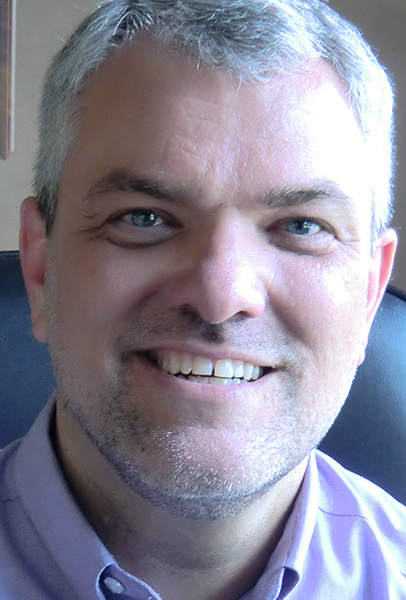How many atheists are anti-religious?
If you said “all,” “most,” or even “many,” think again.
In his most recent book In Faith and In Doubt, Dale McGowan draws on a University of Tennessee study from last year on the different “types of nonbelievers”—challenging the stereotype that atheists are broadly anti-religious.
“Many of the most prominent and well-known voices in modern atheism,” he writes, “are best described as anti-theists… [Yet] [tweetable]even though they are often seen as the ‘typical’ atheist, anti-theists make up only 14.8% of nonbelievers.[/tweetable]”
If that is true, why are the most visible atheists generally anti-religious? I decided to ask McGowan, who may be one of the busiest people in atheism—he is the Executive Director of Foundation Beyond Belief, National Director of Ethical Education for the American Ethical Union, has published five books in the last seven years, and is the new managing editor of the Patheos Atheist channel. Below, he shares his thoughts on why so many people conflate atheism with anti-theism, how to lift up more representative voices, why atheists should participate in interfaith initiatives, and how to make relationships between believers and nonbelievers work.
CS: This week you spoke as an atheist representative at the launch of the Fourth Annual President’s Interfaith and Community Service Campus Challenge. Why should atheists participate in interfaith programs?
DM: [tweetable]Doing meaningful work together is the single most effective means of dismantling distrust and stereotypes.[/tweetable] It’s also the best way to discover the immense common ground that can be disguised by our separate labels. And less distrust and more common ground is a recipe for a better society.
CS: While speaking at the launch, you cited research that suggests that only 14.8% of atheists are anti-religious. Why do you think so many people see atheists as anti-religious?
DM: For the same reason so many atheists see religious people as biblical literalists and fundamentalists when most are not. [tweetable]The louder, more extreme examples of any viewpoint naturally gain the most attention.[/tweetable]
CS: You manage one of the largest atheist blog hubs. Do you feel an obligation to lift up different kinds of atheist voices? Do you think the atheists writing for Patheos are representative of atheists at large?
DM: Individually, the atheist blogs at Patheos are fantastic. Collectively, they know as well as I do that diversity in tone and approach, not to mention gender and ethnic diversity, can use some serious attention. We’ve done some great brainstorming together to address this. Check back in a few months to see what we’ve done!
CS: Almost four years ago, Foundation Beyond Belief launched Challenge the Gap, an interfaith initiative that was controversial at the time. How has that program has helped increase understanding between atheists and theists?
DM: The simple fact that atheists have raised over $100,000 for progressive religious charities is attention-getting in the best possible way. I’ve heard from countless atheists who were initially opposed to the program and now see the power of it. [tweetable]It’s an effective demonstration of our ability to discern between positive and negative expressions of religion.[/tweetable] And theists often say this has changed the way they look at atheists.
When we supported a Christian medical organization in Afghanistan, an executive in the organization said, “Sometimes from my little corner of the world here in Kabul, it’s easy to think that the world is getting more fractious and polar. This has made my day.” [tweetable]There’s more power to change minds in that moment than in a thousand debates.[/tweetable]
CS: In Faith and In Doubt explores believer-nonbeliever relationships. What were your key findings? What might surprise people the most?
DM: The key finding is the one that surprises people most: These relationships can and do succeed—if you avoid certain pitfalls. Desire to convert a partner is a major red flag. If they were both of the same perspective in the beginning and one changed, that’s harder than difference from the beginning. Dogmatic thinking from either partner is bad; learning about each others’ worldviews is good. And if it goes well, both partners often report a much more positive and nuanced opinion of the other worldview. [tweetable]These relationships are the ultimate interfaith project.[/tweetable]
CS: You do a lot. What motivates you? How do you find balance, and do you have any tips for other activists?
DM: I’m inspired by the opportunity to fulfill genuine unmet needs in a positive way. But there are many serious gaps remaining in the nonreligious community, and I have trouble turning down interesting invitations, so burnout can be a serious problem. [tweetable]Don’t wear your frazzle and fatigue as a badge of honor. It kills your effectiveness in the long run, and it’s unhealthy.[/tweetable]
Full disclosure: I assisted with the creation of Challenge the Gap and have served as an advisor since 2010. —Chris Stedman






